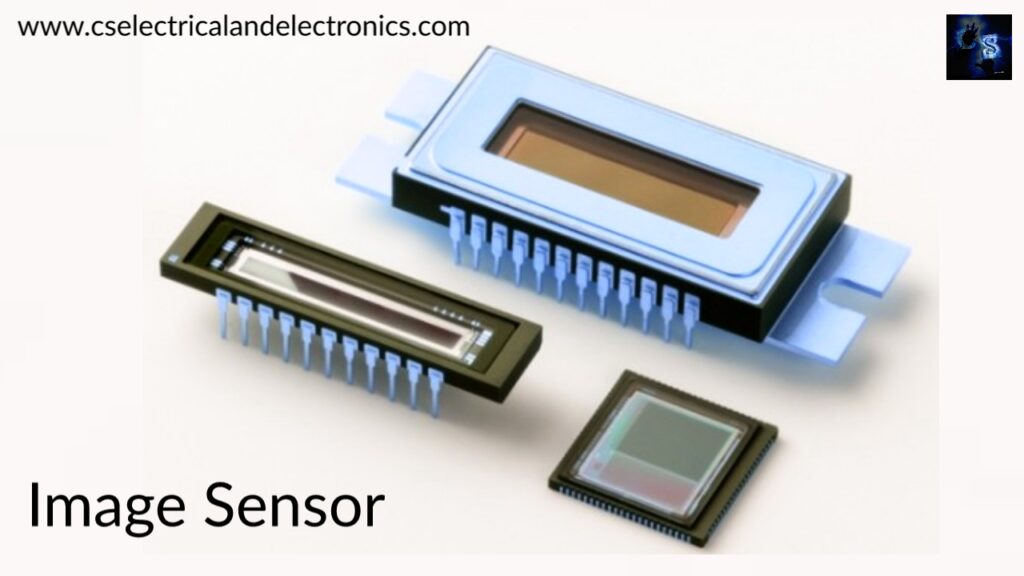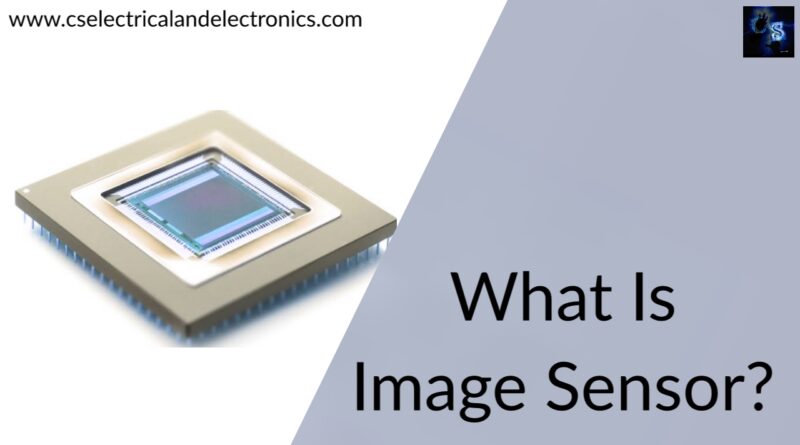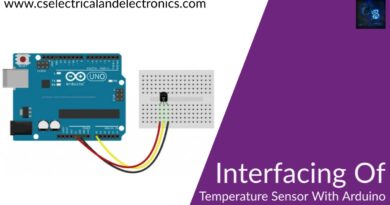What is Image Sensor, Difference Between CCD & CMOS Sensor, Applications
Hello guys, welcome back to my blog. In this article, I will discuss what is image sensor, the working of an image sensor, advantages, disadvantages, applications of image sensors, the difference between CCD and CMOS image sensor, etc.
If you have any doubts related to electrical, electronics, and computer science, then ask question. You can also catch me @ Instagram – Chetan Shidling.
Also, read:
- What Is Clamper Circuit, Working, Types, Advantages, Disadvantages
- What Is Interrupt, Interrupts Handling, Interrupt Service Routine
- What is Linear Integrated Circuits, Why It is Used, Working & Applications
What is Image Sensor
It’s a two-dimensional array made up of thousands of distinct pixels. Free electrons are generated by the quantity of light reflecting on these pixels. The intensity of incident photons affects the quantum of charge. To generate an electrical signal from incoming light photons, both CCD and CMOS rely on the photoelectric effect. To capture digital images, each employs distinct technologies. The conversion of charge into voltage and the readout of the chip varies between the two sensors.
An image sensor detects and transmits data to create an image. These sensors are used in both analog and digital electronic imaging equipment like digital cameras, medical imaging tools, camera modules, night vision tools such as radar, thermal imaging devices, and sonar, among others. Video camera tubes were utilized as analog sensors in the past.
CMOS (complementary metal-oxide-semiconductor) technologies currently employ semiconductor CCDs (charge-coupled devices) instead of active pixel sensors. Vacuum tubes are used in analog sensors, whereas flat-panel detectors are used in digital sensors.
The following are the two types of image sensors that are available:
- Charge-Coupled Device (CCD)
- Complementary Metal Oxide Semiconductor (CMOS)

A collection of capacitors in a CCD image sensor holds electric charge according to the pixel’s light intensity. Every capacitor in the sensor will transfer its contents to its neighbor, and the last capacitor in the array of capacitors will unload its electric charge into an amplifier, recognition to a control circuit in the sensor. CCD sensors may have a data transmission mechanism similar to that of a bucket brigade.
Every pixel in a CMOS image sensor has a CMOS transistor switch and a photodiode, allowing the pixel signals to be enhanced independently. The signals can be permitted straight and in succession with a high-speed comparison with a CCD sensor by activating these switches. Another advantage of using an amplifier for each pixel is that it reduces the noise that occurs from deciphering the electrical signals that are altered from recorded light.
Cameras in tiny consumer goods often employ CMOS sensors, which are less expensive and require less power in battery-powered devices than CCDs. CCD sensors are utilized in high-end broadcast video cameras, whereas CMOS sensors are employed in still photography and consumer items where cost is a key consideration. The process of collecting light and turning it into electrical impulses is accomplished by both types of sensors.
A CCD image sensor’s cells are analog devices. When light reaches the chip, it is stored in each photosensor as a tiny electrical charge. The charges in the line of pixels closest to the (one or more) output amplifiers are amplified and output, after which each line of pixels transfers their charges one line closer to the amplifiers, filling the vacant line nearest the amplifiers. This operation is continued until all of the pixels’ charges have been amplified and output.
A camera system’s image sensor receives photons that are focused on using a lens otherwise optics. The information will be transmitted to a subsequent stage, such as a voltage or a digital signal, depending on the type of sensor, such as CCD / CMOS.
The primary purpose of a CMOS sensor is to convert photons into electrons, which are then converted to a voltage or digital value using an ADC (analog to digital converter).
Advantages of Image Sensor
01. In low-light situations, the CCD image sensor provides great sensitivity.
02. The CCD image sensor is capable of high-speed imaging, as well as superior daylight imaging capability.
03. When viewed in high light, the CCD sensor has a lower risk of damage.
04. Using an image sensor, data from two separate LED transmitters (placed on the vehicle’s back LED array and traffic light) can be readily collected and identified.
05. Background noise sources including sunshine, ambient light, and digital signs can be filtered out by isolating the pixels associated with them. As a result, Image Sensor delivers secure, interference-free, and dependable outside communications.
Disadvantages of Image Sensor
01. Because CCD image sensors require active cooling, they have a high power consumption.
02. Because each pixel performs its own conversion in a CMOS sensor, homogeneity, and image quality are low.
03. The most widely used image sensor has a frame rate of 30 frames per second. This is insufficient for high-data-rate transmission.
04. The image sensor detects optical light that is LOS. As a result, when the link is obstructed by any barrier that hinders light penetration, such as walls, buildings, heavy gas, or dense fog, the link’s performance suffers.
05. CCD image sensors consume more power and have a lower battery life as a result.
Application of Image Sensor:
- Automotive
- Marine
- Aviation
- Manufacturing
- Medical & Healthcare
To sum up, The camera’s general components will vary depending on the manufacturer. The major goal of this concept is to convert the beam into a digital signal to test whether or not to do some impending action. Consumer cameras include additional components for storing and displaying images, whereas machine vision cameras do not.
I hope this article may help you all a lot. Thank you for reading.
Also, read:
- 100 + Electrical Engineering Projects For Students, Engineers
- 1000+ Electronics Projects For Engineers, Diploma, MTech Students
- 1000+ MATLAB Simulink Projects For MTech, Engineering Students
- 500+ Embedded System Projects For Engineer, Diploma, MTech, PhD
- 500+ Projects For Diploma Electrical, Electronics Student, Diploma Project
- 8051 Microcontroller Timers, TCON Register, TMOD Register
- Advancements In 3D Printing Technology And It’s Future
- Advancements In Power Electronics For Energy Efficiency
Author Profile
Latest entries
 All PostsOctober 9, 2021What is Image Sensor, Difference Between CCD & CMOS Sensor, Applications
All PostsOctober 9, 2021What is Image Sensor, Difference Between CCD & CMOS Sensor, Applications All PostsOctober 5, 2021Top 15 Food Automation Companies In The World, Food Companies
All PostsOctober 5, 2021Top 15 Food Automation Companies In The World, Food Companies All PostsSeptember 1, 2021What Is Electrical Torque And Mechanical Torque, Definition
All PostsSeptember 1, 2021What Is Electrical Torque And Mechanical Torque, Definition All PostsSeptember 1, 2021Top 10 Gaming Companies in the World, Game Developing Companies
All PostsSeptember 1, 2021Top 10 Gaming Companies in the World, Game Developing Companies








